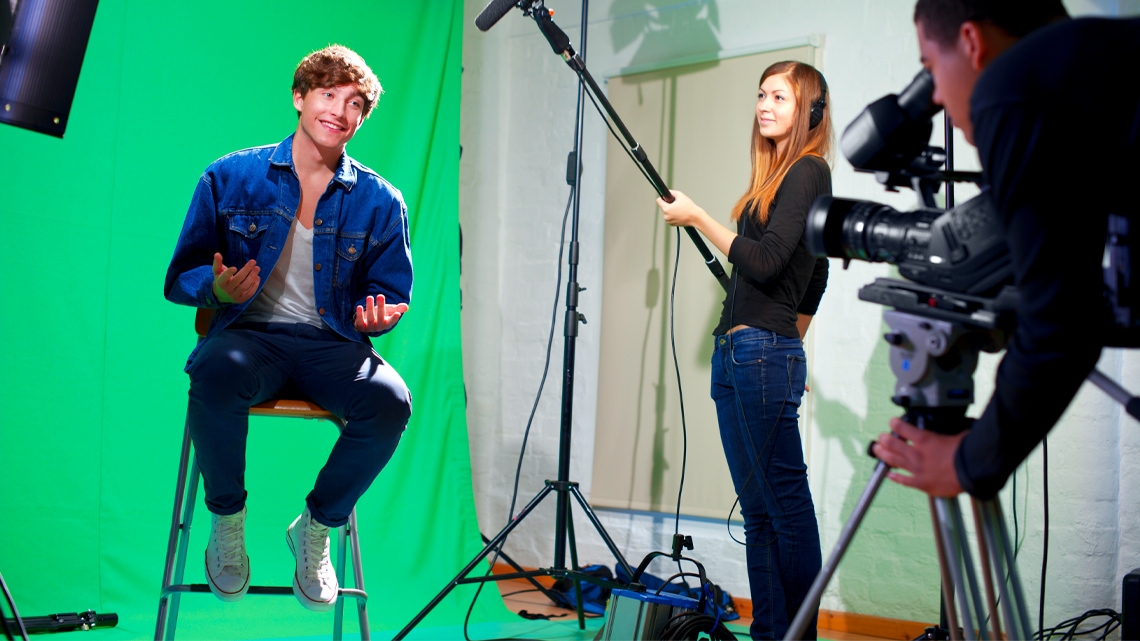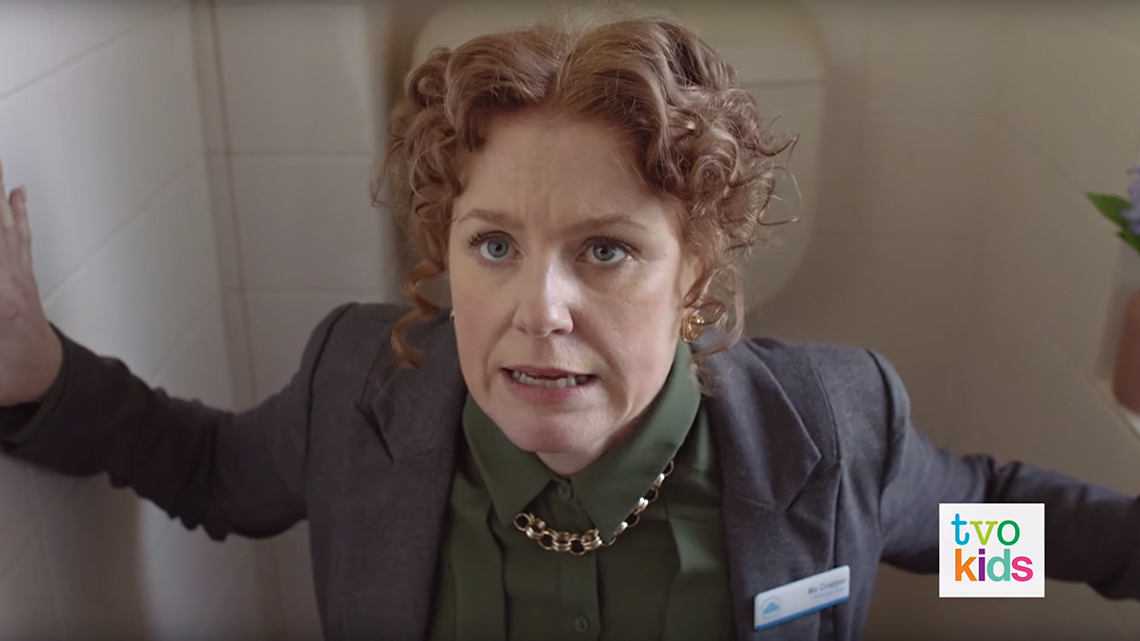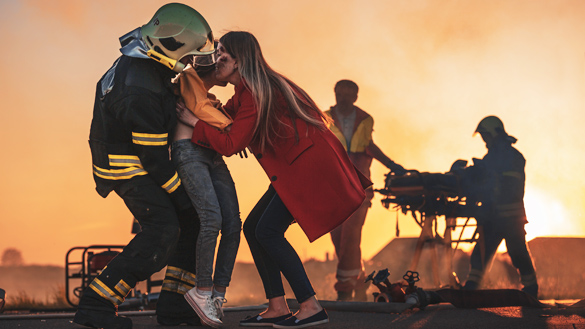Minds On
Purpose and audience
Movies and television entertain, captivate, and inform their audience. Films and TV shows can often be categorized by age, interests, or values.
Let’s explore an episode of Backyard Beats. Monica is the host of the show. Monica explores different musical instruments. Monica’s friends and some professional musicians help her. In this episode, Monica meets Luc, who plays a didgeridoo. A didgeridoo is an instrument created by Indigenous Australian people.
As you explore the video, try to understand the purpose of the show and the target audience.
Who do you think is the target audience for Backyard Beats? Why do you think that? What evidence did you use from the episode to draw this conclusion?
Student Success
Brainstorm
Brainstorm some popular movies and/or TV shows that you have explored. Describe the target audience for each example. You can record your answers using a method of your choice.
Note to teachers: See your teacher guide for collaboration tools, ideas and suggestions.
Actors and intonation
Actors use different techniques to keep their audience interested. They might change their intonation to communicate their ideas and feelings. Intonation describes how the voice rises and falls. They can also use different facial expressions to communicate ideas and feelings.
Student Success
Think-Pair-Share
Review the episode of Backyard Beats. Investigate how the actors change their voice and/or facial expressions. If possible, discuss the following questions with a partner. Record your answers using a method of your choice.
- What facial expressions or intonation did the actor use?
- Did these presentation strategies help keep you interested in the episode? Why or why not?
Note to teachers: See your teacher guide for collaboration tools, ideas and suggestions.
Action
Movie conventions and techniques
We use different conventions and techniques in movies, TV shows, and other media forms to make them appealing to an audience. Conventions are the traditional ways of doing things. Techniques are the specific means used in a particular form of media.

Shots and angles
The video camera used to record films and shows is also used to create different scenes called shots. Each scene helps keep the audience interested and captivated. This happens by giving information in a certain way, advancing the plot, developing a character, or creating a mood.
A video camera uses different techniques to create three different types of shots and two different angles that are used in movies. These are close-up, medium, and long shots, and high and low angles. The following description is from an episode of Hardball. In this episode, two students must find a way to unlock all the locked doors at the school. These doors were locked by mistake by the new automatic door lock system.
The teacher is standing, with her hands on the walls of the room. She is wearing a suit jacket, blouse, a necklace, and a name tag. The angle of the camera only allows for half of her body to be in the frame. Her mouth is open as though she is speaking, and she is looking past the camera.

Student Success
Think-Pair-Share
If possible, work with a partner to answer the following questions. You can record your answers using a method of your choice.
- How does the close-up shot add meaning to the scene?
- Does the shot help us understand how the teacher is feeling? How does it do that?
Note to teachers: See your teacher guide for collaboration tools, ideas and suggestions.
Music and sound effects
Music and sound effects, like shots and angles, make media sources more appealing to the audience. They are techniques used to help communicate different ideas.
Student Success
Think-Pair-Share
If possible, work with a partner to brainstorm some ideas. What kind of music, sound effects, or camera angles would you expect to find in the following categories of movies?
- action
- science fiction
- fantasy
- comedy
- drama
- nature documentary
Complete Movies, Music and Sound Effects in your notebook or use the following fillable and printable document. You can also record your thoughts as an audio recording or using a method of your choice.
| Movie genre | Music/sound effects | Camera angles |
|---|---|---|
| Action | ||
| Science Fiction | ||
| Fantasy | ||
| Comedy | ||
| Drama | ||
| Nature Documentary |
Press the ‘Activity’ button to access Movie Music and Sound Effects.
Note to teachers: See your teacher guide for collaboration tools, ideas and suggestions.
Brainstorm
Brainstorm
Let’s investigate the episode of OddTube, "Van Secrets." As you explore, record any camera angles, music, or sound effects used, or any other techniques used. You can record your observations using a list, a mind map, as an audio recording, or another method of your choice.
Using your observations, how would you classify the television show? Is it a comedy, drama, or action series? What evidence from your observations did you use to draw this conclusion? Record your thinking using a method of your choice.
Consolidation
Before you design…
For each statement, select the corresponding term or definition. Press the ‘Check Answer’ button to see if you're right.
Designing a scene
Test Your Skills!
Test your skills
It's time to design a scene using what you learned about movie conventions and techniques. Select one of the three options below or use another option of your choice.

Option 1: Create a scene for an action film. For example, the scene is about helping others in need.

Option 2: Create a scene for a comedy film. For example, the scene is about someone having an amazing day.

Option 3: Create a scene for a nature documentary. For example, the scene is about a dolphin in its habitat.
Plan and design
After selecting the type of scene, you will create a plan for the scene. Record your ideas as an audio clip, in writing, or using a method of your choice. Try to answer the following questions to help design the scene.
- What characters and objects will be in the scene? Will the character use intonation or facial expressions to help communicate how they are feeling?
- Will the scene be a close-up, a medium, or a long shot? Will the scene use a low or high camera angle?
- What will be used in the scene to help the audience understand the mood?
Describe
Create a description of the scene using a method of your choice. You can choose to record your description by typing, writing, or audio recording. Your description should include:
- a description of what is happening in the scene. What characters are present and what are the characters doing?
- three movie conventions and techniques (such as facial expression, intonation, music, sound effects, camera shots, or camera angles)
- how do those three conventions and techniques help the audience understand the mood of the scene, or add meaning to the scene?
Reflection
As you read through these descriptions, which sentence best describes how you are feeling about your understanding of this learning activity? Press the button that is beside this sentence.
I feel...
Now, record your ideas using a voice recorder, speech-to-text, or writing tool.